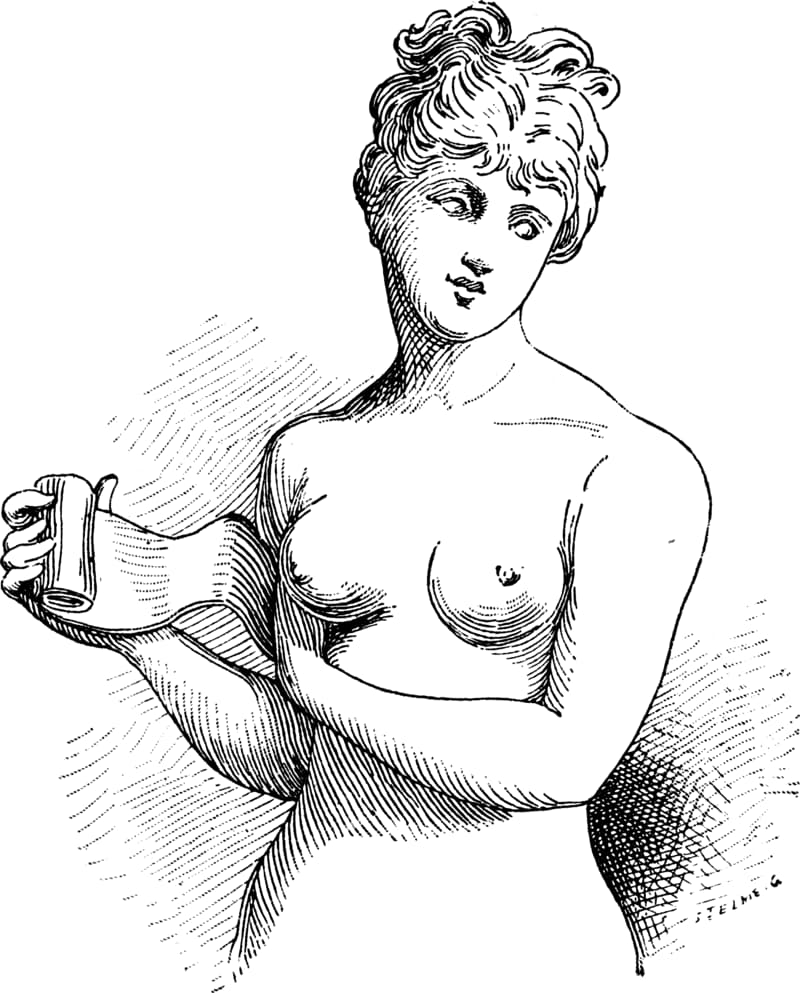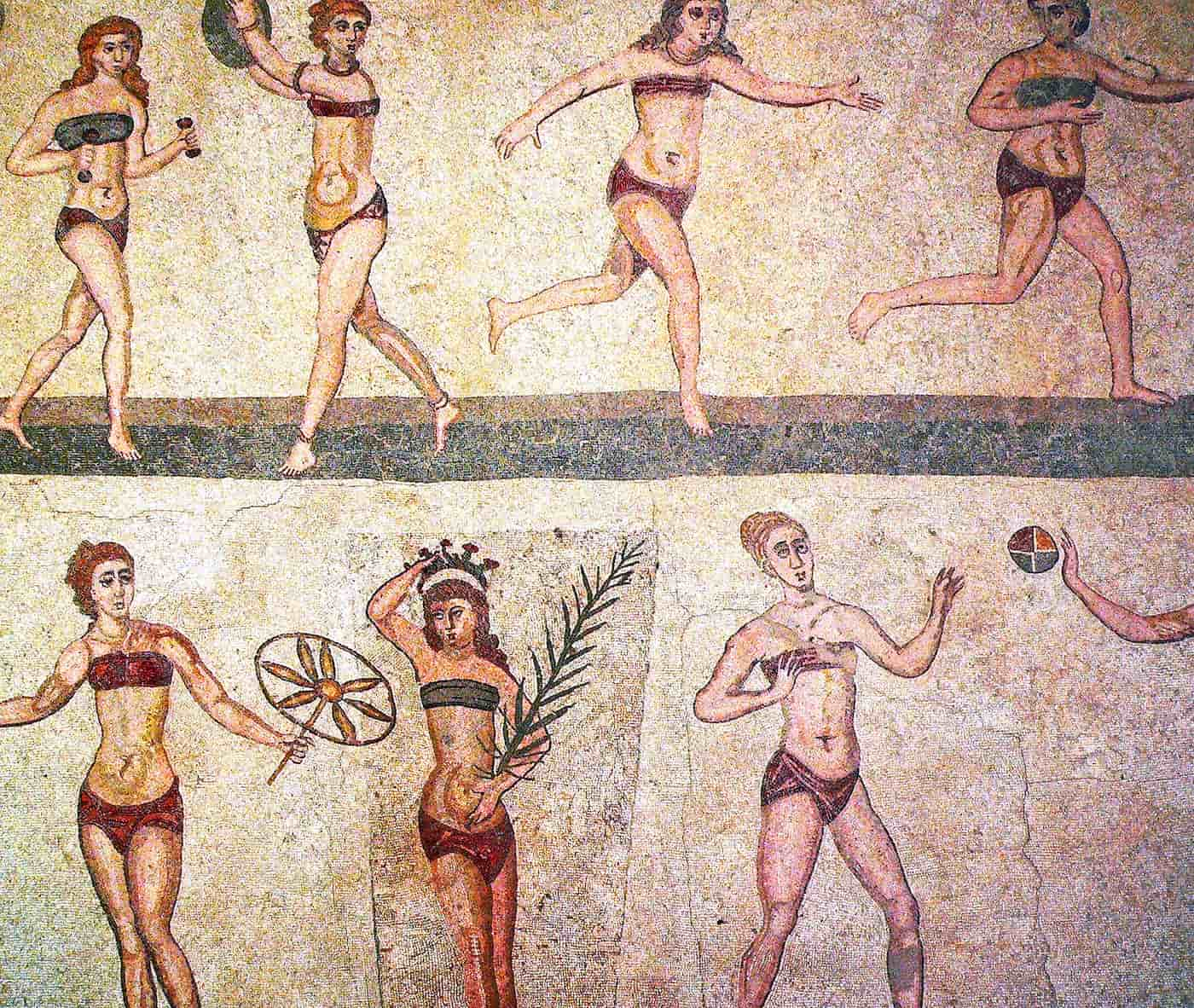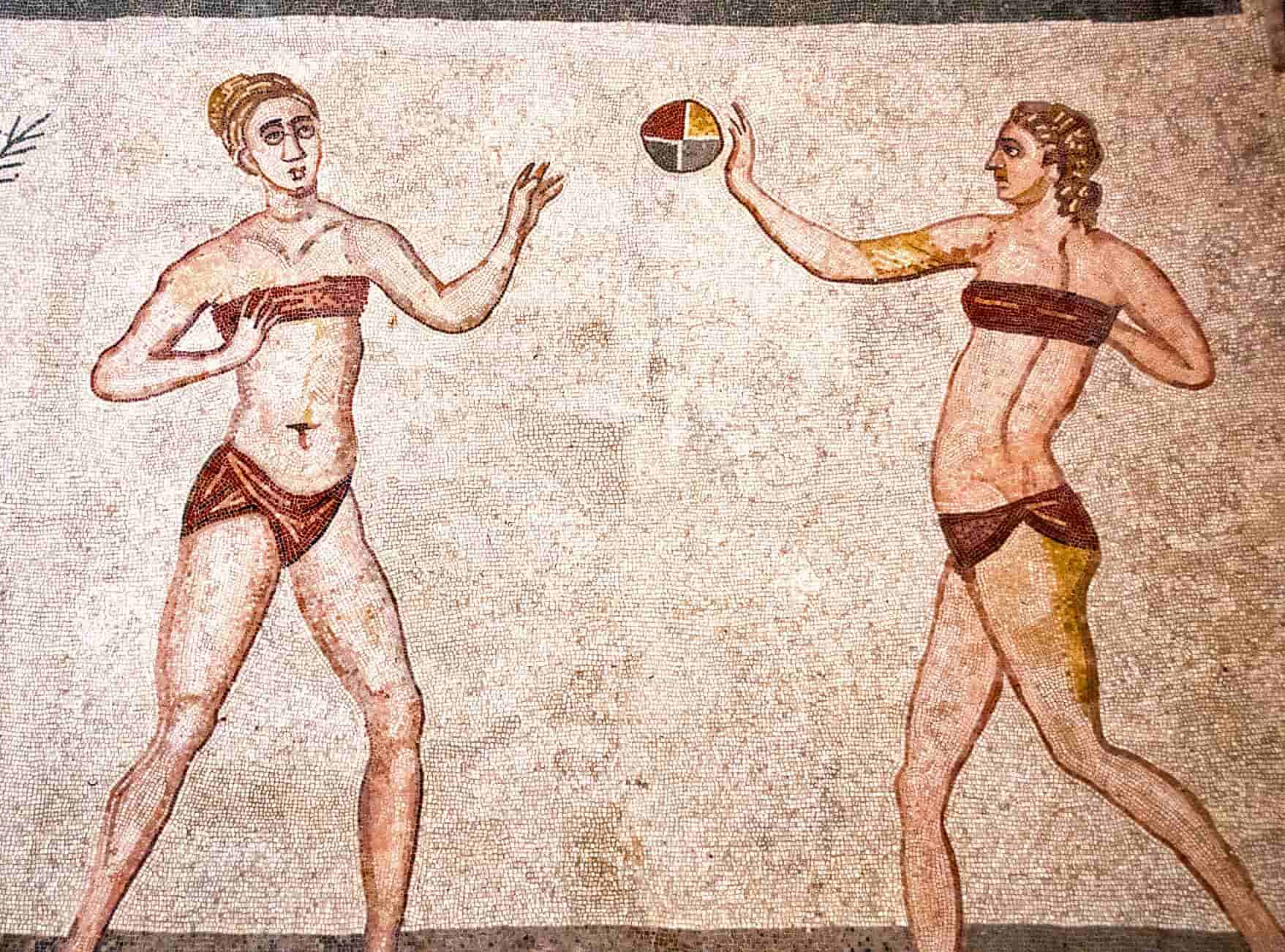- Bras in ancient Rome and Greece were called strophium or strophion.
- The strophium provided breast support to prevent sagging.
- Mosaics depict Roman sportswomen wearing strophium bras and subligaculum panties.
Women in ancient Rome and Greece wore bras, known as strophium (Latin) or strophion (Greek). One of Martial’s epigrams suggests that leather was the typical material for the strophium; however, some golden examples studded with jewels are also mentioned.
Mamillare, Fascia Mamilla (“Breast Ties”), Fascia Pectoralis (“Chest Girdle”), and Mitra are all the various names for this bra in Rome. The ancient Greeks also used the terms tainia, tainidion, apodesmos, stethodesmos, mastodesmos, and mastodeton to refer to their bras, which looked exactly like the Roman bra.
How Was Strophium Used?

The strophium was one of the earliest precursors of bra in recorded history. It was worn either beneath a long or short tunic, depending on the temperature, just like people do in modern times.
It is unknown if the strophium was a common outfit for Roman women or if certain types of women or special occasions only wore it.
The strophium was part of the ancient Roman bikini worn by ancient athletes during their training and competition, which also included the iconic subligaculum. Greek athletes originally wore this garment in competition but later abandoned all clothes and began to perform completely naked.
Since the use of the subligaculum in Roman society is believed to have originated with the Etruscan people, it is possible that the Romans sampled this ancient bra from the same civilization.
In his Annals, Tacitus tells the tale of a courageous lady who hanged herself with her own breast band or strophium. It happened under Nero’s reign, during the Conspiracy of Piso treason trials. She was unwilling to give in to torture and expose the identities of the conspirators. When compared to the other conspirators, Tacitus thought she was brave.
Function of the Strophium

Its primary function was to prevent sagging by providing support and containment for women’s breasts. Large breasts were viewed as either humorous or a sign of age or unattractiveness in Roman culture. Both girls and women wore restrictive breast bands to avoid this. Styles varied according to the intensity of the exercise. Even some graphic Roman art depicts prostitute women wearing this garment, which covers their breasts.
The Romans embraced the Greek ideal of male and female beauty. Large penises were seen as unattractive by most, except when they were worn as amulets to ward against jealousy. Catullus and other Roman authors referred to the breasts with the term “papillae” (nipples), which emphasized their minimalistic preference.

Ovid also dreamed about his lover’s smaller breasts. Martial made fun of women with large breasts, and older women with “pendulous” breasts were stigmatized. Women who were meant to be humorously ugly in Roman plays often had enlarged breasts. Greek epigrams celebrated the female breast, while Roman authors paid little mind beyond including them as part of a woman’s attractiveness or shape.
Archeological Findings
Roman Sportswomen

On the floor of the Hall of the Coronation of the Victorious at the Villa Romana del Casale in Sicily, a mosaic portraying female athletes in strophiums was discovered, dating back to the time of Diocletian (286–305 AD). In this 4th-century AD mosaic, Roman girls are playing sports in their bikinis, which is a combination of a strophium as a bra and a subligaculum as a panty. Women are seen in different athletic activities, including gymnastics, weightlifting, and running.
Venus

The Casa della Venere, the tablinum of the House of Julia Felix, and the garden-atrium of the House of Loreius Tiburtinus all include strophiums depicting the goddess Venus in a bikini. In the above example, she is wearing a golden one.
Like the Greek Aphrodite, Venus was a goddess associated with love and beauty, and depicting her in a bikini made of a strophium bra tells us how similar our understanding of beauty in ancient times was compared to today.
References
- Featured Image: Flickr, Paul Asman and Jill Lenob – CC BY 2.0
- Roman Clothing and Fashion – Google Books
- Women and Roman Law – Jane F. Gardner – Cambridge Core


